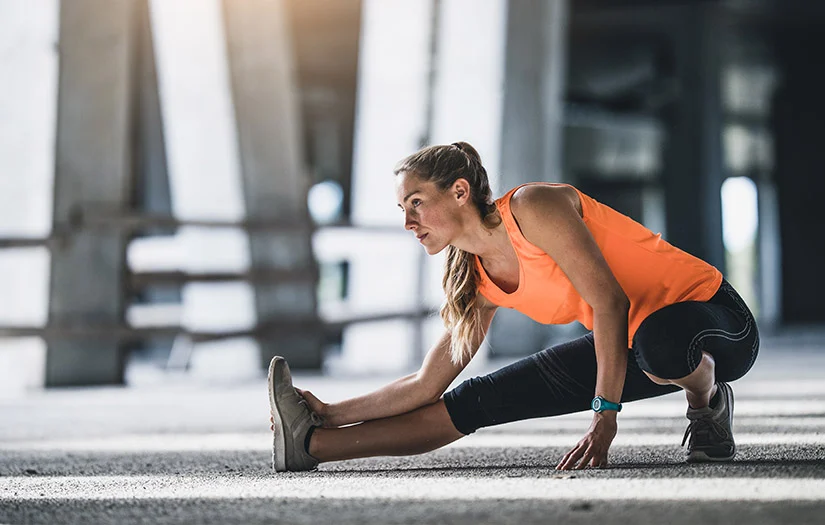We’ve all seen athletes on TV meticulously warming up before a big game or race, but how often do we see them cooling down afterward? It’s easy to forget about this crucial part of the exercise routine because it’s rarely highlighted in media coverage. Cooling down involves gradually reducing the intensity of your workout, usually through light aerobic activity and stretching, to help your body transition back to a resting state.
Despite its lack of spotlight, cooling down is important, the process helps to gradually transition the body from high-intensity activity to rest, promoting blood flow, reducing metabolic waste, and helps reduce stiffness. By dedicating a few extra minutes to cooling down, you can possibly optimise your overall fitness, reduce the risk of injury, and improve your performance in future workouts.
Facilitates Muscle Recovery and Alleviates Soreness
Cooling down with aids, such as contrast baths (alternating hot and cold water immersion), helps recovery by promoting the removal of metabolic waste products and improving blood flow to the muscles. According to Hubbard and Hoffmann (2018), “cooling down exercises facilitate the clearance of metabolic byproducts such as lactic acid, leading to a reduction in delayed-onset muscle soreness (DOMS)” (p. 830). This “post-exercise cooling down significantly decreases muscle soreness and facilitates faster recovery” (Hubbard et al., 2018, p. 830), allowing athletes to perform at their best in subsequent sessions.
Prevents Muscle Stiffness
Incorporating stretching into the cool-down routine may assist in maintaining or increasing flexibility and reduce muscle stiffness. Wang et al. (2017) state that “stretching as part of the cool-down process improves muscle elasticity and joint range of motion, which is crucial for preventing injuries associated with muscle stiffness” (p. 220). Enhanced flexibility may help to protect against muscle strains and other musculoskeletal injuries.
Minimises Risk to Overall Health
Cooling down helps transition the body gradually from intense activity to a resting state, which reduces the risk of cardiovascular complications and musculoskeletal injuries. Kjendlie et al. (2020) highlight that “a structured cool-down process stabilises heart rate and blood pressure, mitigating risks such as dizziness and fainting, and also reduces the abrupt shift in muscle condition that can lead to injuries” (p. 671). Additionally, Gomes et al. (2021) emphasise that “effective cooling down strategies support sustained athletic performance by preparing the body better for future physical demands” (p. 28).
Things To Keep In Mind During Your Cool Down
- Low-Intensity Aerobic Activity
- Finish your session with 5-10 minutes of low-intensity aerobic activity, such as light jogging or walking, to gradually lower heart rate and promote overall recovery.
- Static Stretching
- Incorporate static stretching to help relax muscles and improve flexibility. Focus on major muscle groups used during the activity, holding each stretch for 15-30 seconds to reduce muscle tension and aid in recovery.
- Foam Rolling (Self-Myofascial Release)
- Use foam rolling or self-myofascial release to target areas of muscle tightness or soreness. This technique helps increase blood flow, reduce muscle stiffness, and improve flexibility.
- Rehydration and Nutrition
- Rehydrate with water or electrolyte-rich beverages and consume a balanced snack containing carbohydrates and protein to replenish energy stores and support muscle repair.
- Progressive Muscle Relaxation
- Perform progressive muscle relaxation exercises, where you tense and then slowly release different muscle groups. This helps in reducing overall muscle tension and promotes a state of relaxation.
- Applying cooling techniques
- Implement techniques to cool down muscles, such as using contrast baths (alternating hot and cold water immersion) to reduce muscle soreness and inflammation.
- Mental Reflection and Visualisation
- Incorporate mental reflection or visualisation practices to review performance, set goals, and mentally unwind from the session. This aids in cognitive recovery and helps maintain a positive mindset.
Reference
Behm, D. G., & Chaouachi, A. (2011). A review of the acute effects of static and dynamic stretching on performance. European Journal of Applied Physiology, 111(11), 2633-2651.
Gomes, L. A., Lima, F. C., & Silva, M. A. (2021). Effects of cooling down on physical performance and injury prevention: A systematic review. Journal of Sports Science & Medicine, 20(1), 22-32.
Hubbard, T. J., & Hoffmann, C. P. (2018). The effects of post-exercise cooling down on muscle soreness and recovery: A meta-analysis. Sports Medicine, 48(4), 823-836.
Kabat-Zinn, J. (1990). Full catastrophe living: Using the wisdom of your body and mind to face stress, pain, and illness. Bantam.
Kjendlie, P. L., van den Tillaar, R., & Hogg, J. M. (2020). Cooling down strategies in sport: A systematic review of effectiveness. International Journal of Sports Physiology and Performance, 15(5), 663-674.
Mendelson, T., & McKay, M. (2019). Mindfulness for sport performance: A review of the literature. Journal of Sports Psychology, 24(2), 98-110.
Sawka, M. N., & Coyle, E. F. (1999). Influence of body water and electrolyte loss on sports performance. In Sports Medicine (Vol. 27, pp. 299-310). Adis International.
Sullivan, S., & Smith, A. (2020). The effect of foam rolling on recovery and performance: A review of literature. Journal of Sports Science & Medicine, 19(4), 605-612.
Tipton, K. D. (2015). Nutrition for exercise and recovery. In Exercise and Sport Science (pp. 339-351). Routledge.
Wang, L., Zhang, M., & Chen, W. (2017). Stretching and flexibility exercises: Benefits for athletes and injury prevention. Journal of Sports Rehabilitation, 26(3), 215-226.



